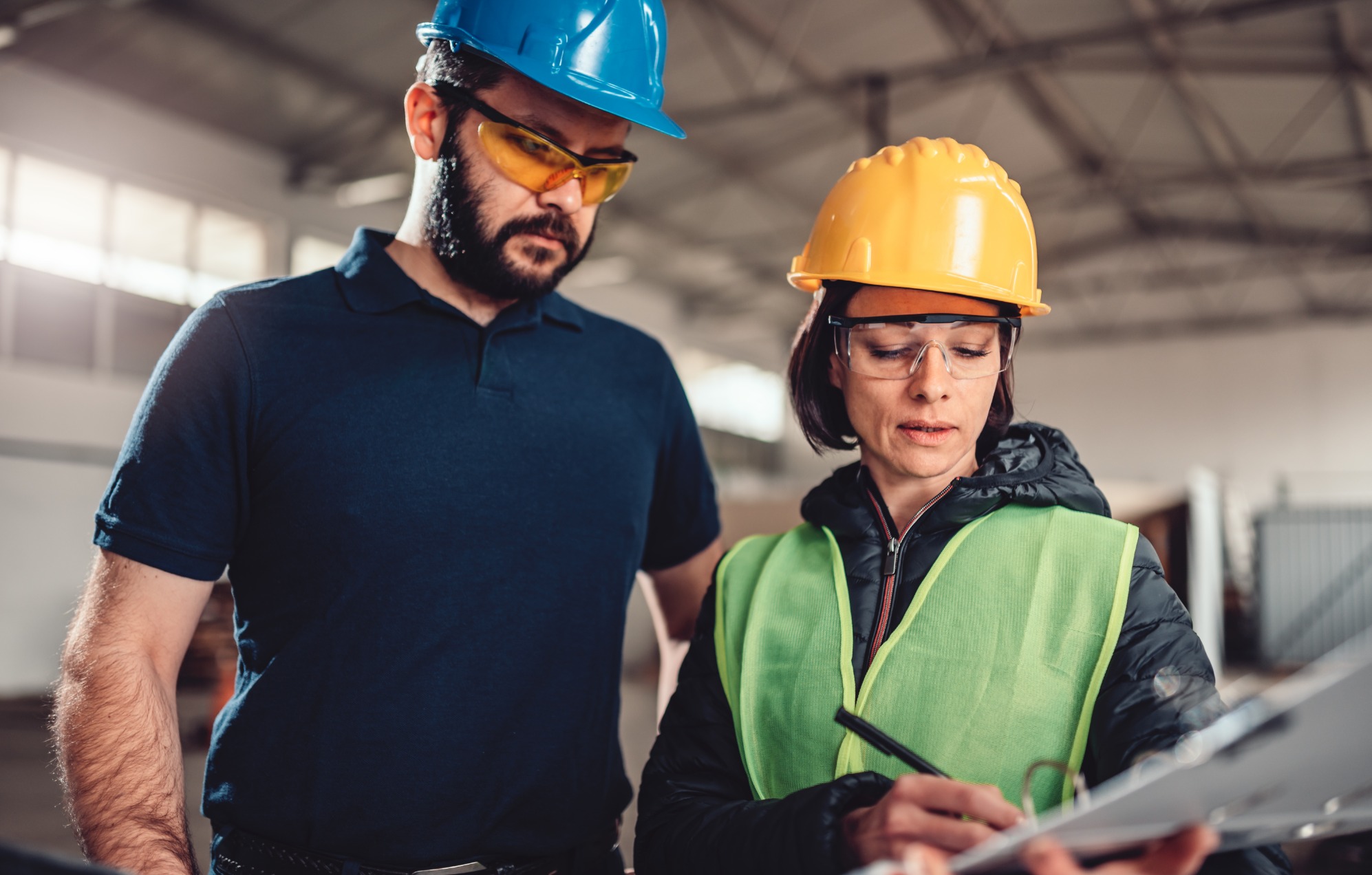The construction industry is one of the most dangerous to work in. A 2019 HSE report found that the industry was responsible for the second-highest number of workplace fatalities, with the highest annual average across all sectors.
However, working in construction shouldn’t automatically condemn a worker to dangerous situations. As an employer, it’s your responsibility to keep your workforce safe. The key to mitigating health and safety risks is to get ahead of them – by doing so, it’ll help both you and your workers avoid any nasty surprises.
Following health and safety best practice is essential. It’s worth your time to get it right – a poor standard of health and safety management can affect your business in more ways than one.
In this blog, we’ll look at the best practices you can utilise to help your construction business mitigate health and safety risks.
Get Ahead of Construction Health and Safety Risks
To begin, it’s important to know what causes workplace safety risks. In our most recent study, we discovered a shocking lack of workplace safety standards across the UK construction industry.
These failings included incorrectly recording and maintaining personnel health and safety records and a lack of competent worker training. Most companies surveyed weren’t confident they would pass an on-the-spot HSE inspection. A lot of these failings can be prevented through proper planning and management.
1. Engage in Communication
Effective communication is the foundation of all successful health and safety procedures. Mastering it will mitigate safety risks in the workplace, ensuring everyone on the same page.
As an employer, you should relay crucial information to your team in a concise, easy-to-understand manner. This is because one wrong move could lead to disaster. Effective communication means everyone, from your temporary workers to senior managers, understands what’s going on. This creates a more engaged team. More engaged employees make less mistakes, which leads to less health and safety issues in general.
Workers should be equipped with the tools to report incidents on site as quickly as possible. Doing so will not only help employees autonomously manage their own safety, but also enable you to secure the construction site against that issue recurring.
2. Provide Training
Some of the most vital elements of health and safety can’t be implemented at a workforce level without adequate training.
Training can incorporate simple things such as how to properly use ladders or protect against a fall. The key here is to ensure everyone is trained to an adequate level, helping to mitigate risk on-site. Ensuring your workforce know what to do in the event of an accident is essential practice.
Hosting regular safety meetings can help to keep workers engaged with the health and safety best practice of your company.
3. Understand the Risks
When workers are using heavy machinery, or performing tasks at a height, risk is sure to follow. However, understanding what risks are present helps you prepare your team for them.
For example, one of the biggest dangers found on a construction site, asbestos, can be avoided entirely through worker awareness. Identifying where asbestos can be found is of critical importance to worker safety. This is just one example of the importance of surveying the site beforehand and conducting a thorough risk assessment can help expose other risks.
An unknowing worker is one of the biggest risks on a construction site. As a responsible employer, identifying these hazards can help mitigate risk.
4. Have the Correct Equipment
Workers should be equipped with everything they need to do their job properly and safely. All workers should be wearing their PPE, or Personal Protective Equipment, as all PPE provides some level of protection.
PPE includes protective headgear, eyewear, safety footwear and hi-visibility clothing. It protects your workers against the numerous hazards found on a construction site, including flying debris and machinery. Wearing hi-visibility clothing can help mitigate the risk of workers being struck by moving vehicles. The depth of available PPE is great and can be tailored to meet an individual situation’s needs.
All PPE should be in good condition. If the equipment is damaged, it must be disposed of and replaced by the employer. Equipping workers with everything they need to protect themselves is a great way of getting ahead of health and safety risks.
5. Stay Alert
It’s important to remember that even with all these best practices in place, a construction site remains a dangerous place. It’s therefore key that you, and your workers, always stay vigilant.
Some risks might manifest themselves as the work proceeds. For example, noise distraction from a machine might present itself as a potential risk throughout the day. By remaining vigilant, you can determine whether it’s likely to be a risk and mitigate it there and then.
Greater employee engagement with your health and safety protocols means they’ll be actively more aware of hazards. By promoting commitment from both workers and employers, you can encourage a workplace that stays alert to potential health and safety risks.
Engaged workers understand what’s required of them and their colleagues, making them more aware of their surroundings. Staying alert to the dangers of working on a construction site can help you prevent them.
Keep Your Site Safe
There’s no avoiding the amount of potential risks at a construction site. However, by incorporating the points laid out above, you can help to mitigate it.
It’s the employer’s responsibility to ensure the safety of their workers, but it’s also up to the workers to employ these best practices. Through a concerted team effort, it’s possible to make a construction site a considerably safer place to work than it might normally be.
If you’d like to learn more about how to engage employees with health and safety, mitigate risk and promote best practice in your organisation, read our free guide.
.png)




